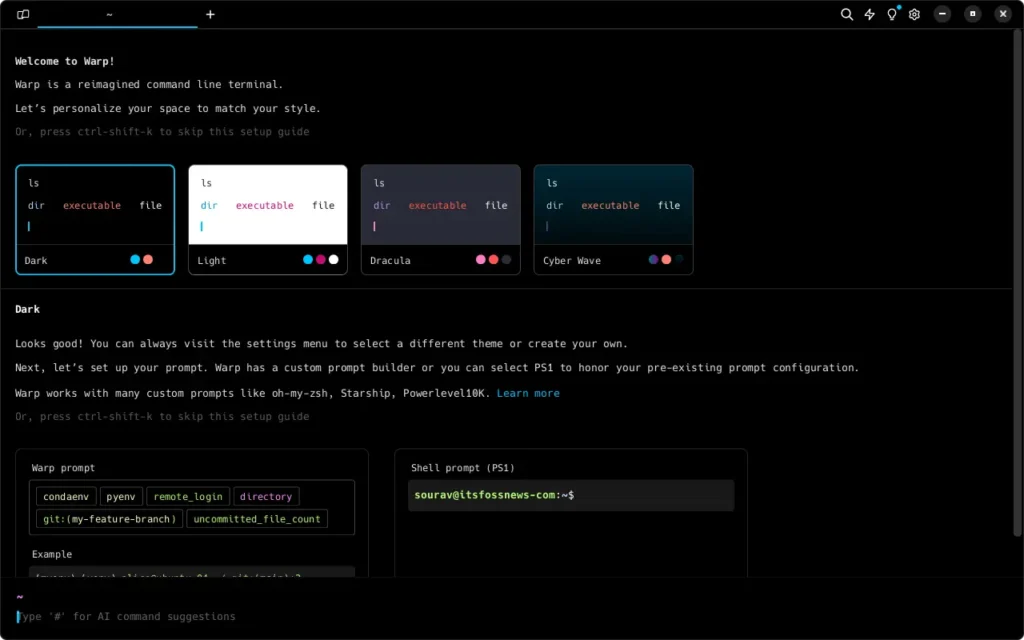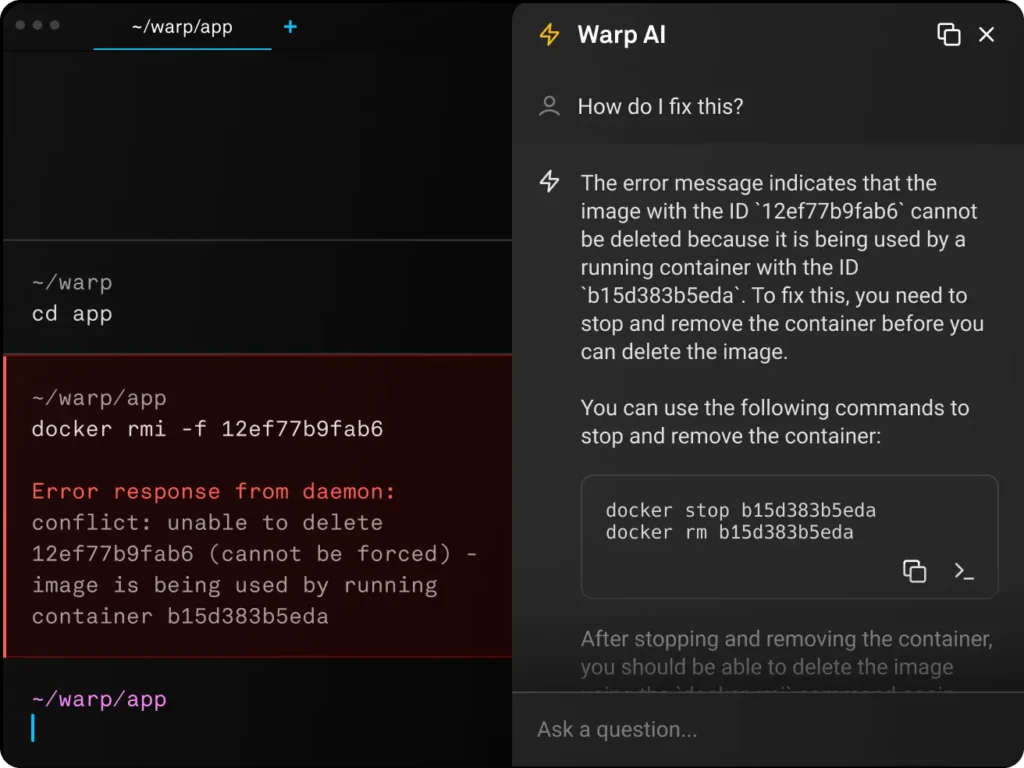Introduction
In the digital realm, where efficiency and productivity are paramount, Warp emerges as a groundbreaking terminal emulator, now extending its reach to the Linux community. This article delves into the essence of Warp, unveiling its features, technical prowess, and the significant impact it promises for Linux users.
What is Warp?
A Brief Overview
Warp reimagines the conventional terminal experience with a Rust-based architecture, integrating AI and collaborative tools to redefine productivity. Initially exclusive to macOS, its awaited arrival on Linux marks a pivotal expansion, aiming to cater to a broader spectrum of developers and IT professionals.

Key Features and Innovations
Boasting GPU acceleration, workflow blocks, and smart suggestions, Warp transcends traditional terminal limitations. Its intuitive command palette, customizable interface, and scriptability empower users to streamline their workflows like never before.
Warp’s Journey to Linux
The Anticipation and Launch
Linux, the cornerstone of development, servers, and embedded systems worldwide, has long awaited a terminal solution that combines efficiency, modernity, and the power of collaboration. Warp’s expansion to Linux was met with enthusiasm, marking a significant milestone for developers who sought a more advanced terminal experience. The anticipation was not just about new features; it was about bringing a reimagined workflow to the Linux ecosystem, a platform renowned for its stability, flexibility, and open-source nature.
What Linux Users Can Expect
For Linux users, Warp’s introduction is not merely a new tool; it’s a transformation of their daily interactions with the command line. With features like GPU-accelerated rendering for smoother performance and compatibility with popular shells (Zsh, Bash, Fish), Warp offers a familiar yet enhanced environment. The seamless integration with existing setups ensures that transitioning to Warp is a smooth process, allowing users to benefit from its advanced features immediately without extensive reconfiguration.
Technical Insights and Performance
Built on Rust and GPU Acceleration
Warp leverages Rust’s performance and reliability, ensuring that the terminal remains responsive even under heavy loads. The decision to use Rust, known for its safety and speed, underpins Warp’s commitment to providing a high-performance terminal experience. The GPU acceleration is a game-changer, rendering text and UI elements smoothly, significantly improving upon the traditional terminal experience, which often relies solely on the CPU.
Compatibility and Customization
Warp’s strength lies in its deep compatibility with existing shells and its array of customization options. Users are not forced into a one-size-fits-all solution; instead, they can tailor Warp to their liking, from themes and fonts to more functional customizations like keybindings and workflows. This level of personalization ensures that Warp can fit into any developer’s toolkit, enhancing productivity without compromising individual preferences or existing workflows.
Collaborative Features and AI Integration
Warp Drive and AI Assistance
At its core, Warp is designed for collaboration. Warp Drive enables teams to share command blocks and workflows effortlessly, ensuring that valuable knowledge is easily accessible and reusable. This feature, combined with Warp’s AI assistance, transforms the terminal from a solitary workspace into a collaborative environment. AI suggestions help users find commands, debug issues, and navigate complex setups, making the terminal more approachable and less time-consuming.

Enhancing Productivity for Teams
Warp’s collaborative features are not just about sharing commands; they’re about streamlining teamwork. The ability to quickly share workflows and solutions directly within the terminal can dramatically reduce onboarding times for new team members and accelerate incident response. This collective intelligence, powered by Warp, ensures that teams are more cohesive and efficient, capable of tackling challenges more effectively.
Looking Ahead
Future Developments and Windows Release
The positive reception from the Linux community has only fueled Warp’s ambition. With sights set on a Windows release, Warp aims to bridge the gap across operating systems, providing a unified, high-performance terminal experience for developers regardless of their platform. This cross-platform availability is crucial for teams working in diverse environments, promising a future where Warp becomes an indispensable tool for developers everywhere.
Conclusion
Warp’s launch on Linux is more than just a new software release; it represents a leap towards a future where terminals are not just functional but are integral to collaborative, efficient development workflows. By blending cutting-edge technology with an intuitive, user-focused design, Warp stands poised to redefine our interaction with the command line, making it more powerful, collaborative, and accessible to developers of all skill levels.
Frequently Asked Questions (FAQs)
- What makes Warp different from other terminal emulators? Warp sets itself apart with GPU acceleration, AI integration, collaborative workflows (Warp Drive), and a customizable interface, offering a superior, modern terminal experience.
- Is Warp available for all Linux distributions? Warp supports major Linux distributions with packages for .deb, .rpm, .pkg.tar.zst, and .AppImage, ensuring wide compatibility. Download Warp
- How does Warp utilize AI to improve the terminal experience? Warp’s AI assists with command lookup, debugging, and translating natural language into CLI commands, integrating seamlessly into terminal workflows and enhancing productivity.
- Can Warp be customized to fit personal preferences? Yes, Warp offers extensive customization options, including themes, fonts, and keybindings, allowing users to tailor the terminal to their preferences and needs.
- What future developments are planned for Warp? Warp’s roadmap includes a Windows version to ensure cross-platform compatibility, alongside ongoing enhancements to AI features, collaborative tools, and user customization options.
Warp’s journey into the Linux ecosystem marks the beginning of a new era for terminal emulators, promising a blend of performance, collaboration, and user-centric design that stands to revolutionize how developers interact with their machines.
